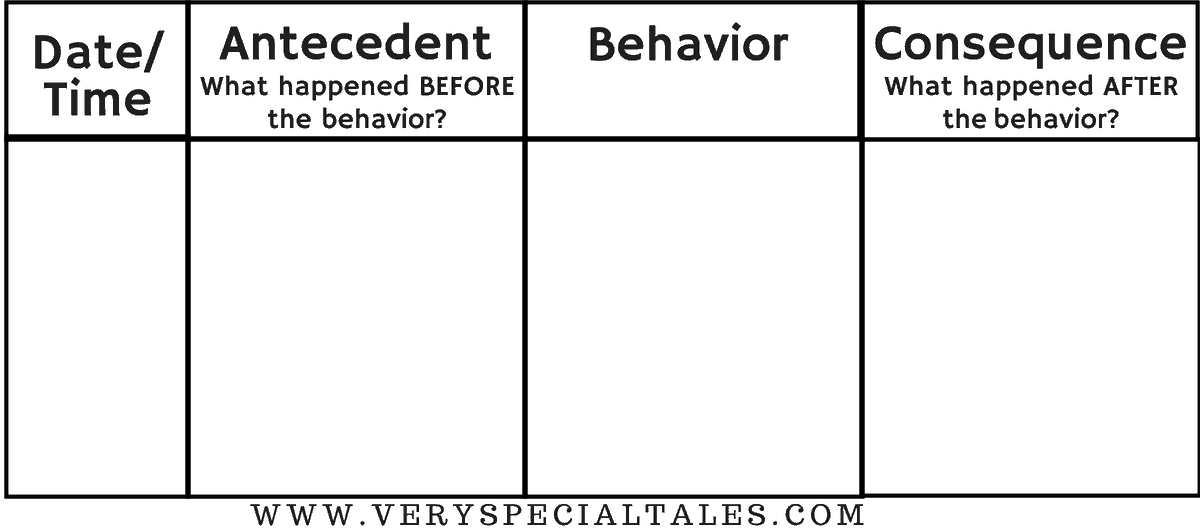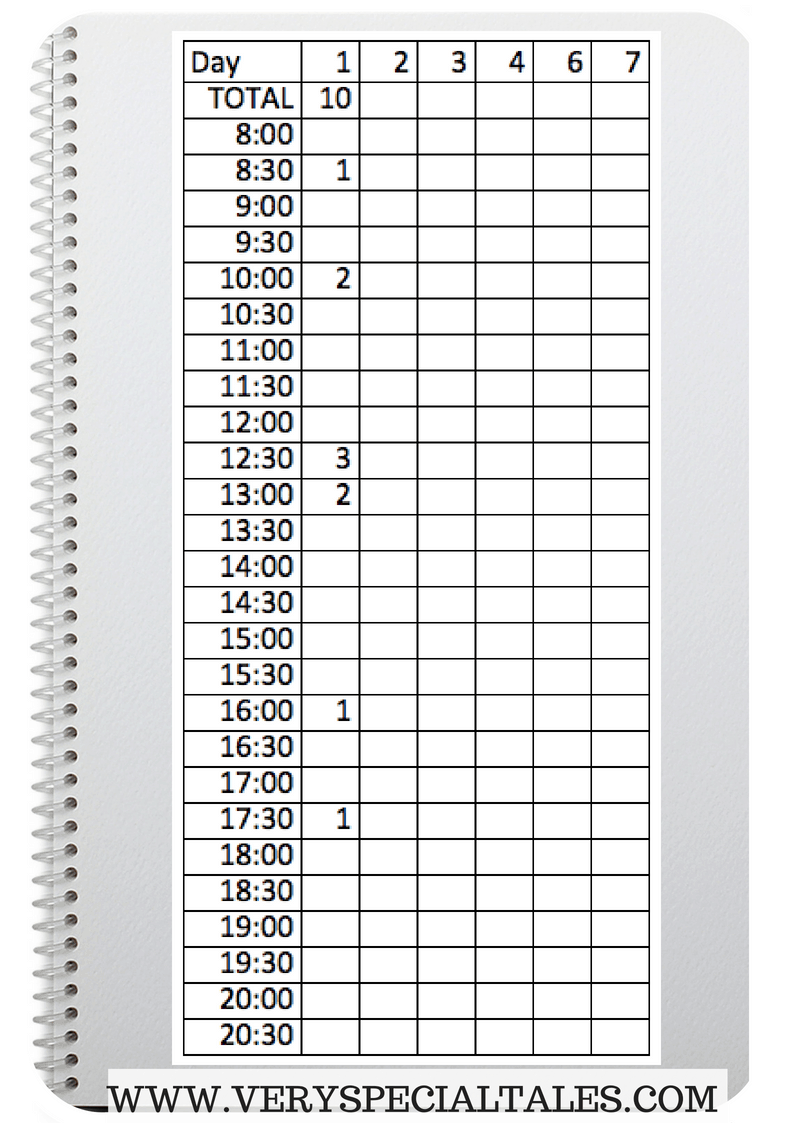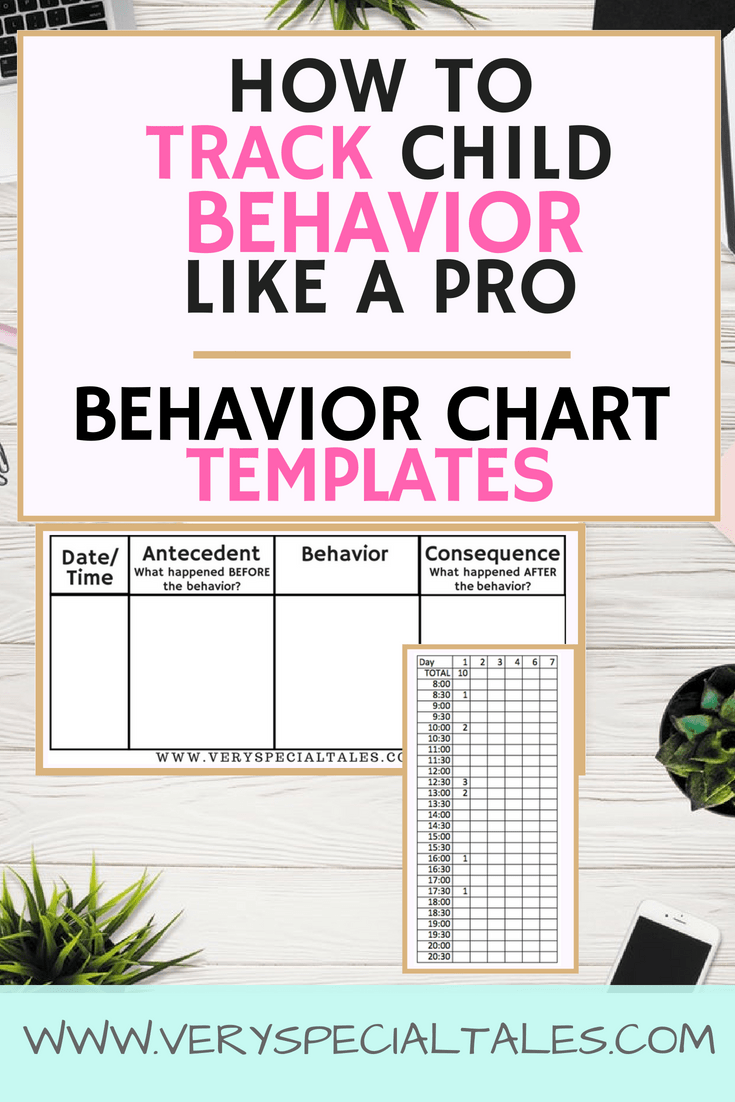
Behavior Charts: How to Easily Track Behavior Like a Pro
Toys flushed down the toilet. Books torn Dolls broken. Random tantrums. Have you ever been so desperate with your child´s behavior problems that you just had to look for professional help? I have. And I also felt a bit disappointed when my very detailed horror stories didn´t get us that non-existing magic recipe that would fix our behavior issues. Instead, I was sent home with some homework to do: behavior charts. And more specifically, I had to track behavior with an ABC chart.
It´s been years since that first psychologist visit. And I have done lots of behavior tracking since then. Different behavior problems have arisen at different ages. I now undertake the behavior tracking task with greater confidence. It probably helps that I´ve completed a Bachelor in Psychology and have further studied challenging behavior. So, today I´m going to share with you two different types of behavior charts. They may be a great help if you are dealing with behavior issues at home.
Why do I find behavior charts or trackers useful, from a parent perspective:
- They help you make educated guesses as to why some behaviors are present
- They provide you with specific and measurable information. So, when you seek for help you make the most powerful case.
- They provide you with objective information, not based on your memory or perceptions
- It makes you feel in control. When you track behavior, you are not just suffering the situation. By gathering important information that will help you make decisions you are acting on it.
Before I continue, let me emphasize that nothing you read on the internet or a book can substitute seeking professional support. If you are undergoing a serious challenging behavior situation you need to consult your doctor.
(Disclosure: We are a participant in the Amazon Services LLC Associates Program, an affiliate advertising program designed to provide a means for us to earn fees by linking to Amazon.com and affiliated sites. As an Amazon Associate, I earn from qualifying purchases. You can also read our Disclosure & Disclaimer policy here)
Track Behavior Like a Pro: Behavior Trackers that a Parent can Easily Use at Home
Behavior Charts: Antecedent-Behavior-Consequence (ABC) Charts
Even if you feel you have enlightened your therapist with a thousand anecdotes that fully explained problems at home, that is not good enough. Your psychologist or behavioral therapist needs some extra pieces of the puzzle. And if that is the case for your therapist, it is also the case for you.
So let me help you save some time and money. Let´s dive into what type of information will help you understand better the behavior problems at home. And, in case you need to seek professional help, this same information will be extremely useful to your therapist.
What is an ABC Chart?
An ABC chart is a direct observational tool used to collect information about behaviors that take place in a certain environment (class, home, street). ABC stands for:
- A= antecedent (what is happening before the episode starts)
- B= behavior (what does the kid do?)
- C= consequence (what happens after the behavior)
The outcome of this observation should be more clarity on two important pieces of information:
- Understanding what may be causing the behavior
- Understanding what factors affect its repetition. The consequences of your kid’s action (that is what you and other family member do) may be perpetuating these behaviors.
You need to be clear, though, that it only helps you make an educated guess ( or come up with a “hypothesis” that sounds more scientifical!). This type of observation tool will provide you with what is called a “correlation”, not a cause.
This is what your ABC tracking sheet will look like:

You will need to record the information with some level of detail:
A= Antecedent.
- Where was he/she?
- Who was in the room?
- What was each person in the situation doing (brother, sister, parents or whoever was there)
- Was there a specific demand?
B= Behavior
What exactly happened? Record everything, not just “misbehaved” but the very specific behaviors that took place:
- Vocalisations (e.g. talked very loud, shouted)
- Verbal aggression (e.g. swore, insulted)
- Physical aggression (e.g. hit, kicked)
- Self-injurious behavior (e.g. headbanging, self-biting)
C=Consequence
- What happened immediately after your kid engaged in challenging behavior.
- What did everybody in the room do?
- Did your kid get attention? (even if he/she got told off that´s attention!)
- Did your kid get what he/she wanted?
- Did he/she manage to stop an activity or a situation that was going on?
- What did you do and say, and the same information for all the others present at the time of the incident?
Examples of how to fill in an ABC Chart
Let me give you some examples of how the record will look:
–Antecedent: All the family is in the living room watching t.v. Mom is reading news on her phone. Sister is watching Minnie Mouse. Brother is not really doing anything, and he does not enjoy the show.
–Behavior: Brother takes one of the sister’s toys and flushes it down the toilet
–Consequence: Everybody gets mad. Sister is upset. Mum stops reading news and lectures son, asks him to apologise, explains that is not ok (or gets really mad). Everybody is now surrounding him and talking to him
–Antecedent: Mum is talking to sister and complimenting her for a nice drawing
–Behavior: Brother starts throwing toys to the floor
–Consequence: Mum stops talking to sister and goes to talk to brother to ask him to behave
So, for a few days, you will probably need to keep track of behaviors, not just to list things that happen, but to start creating a picture of why/when they happen and what are you doing afterwards that encourage the repetition of those situations. Depending on what comes up from this “field work” you will be able to come up with a plan to address your reality.
If you want to start tracking challenging behavior at home, download the behavior chart templates that I include at the end of this post.
Behaviour Charts: Scatterplot Graph
In some cases, our behavior problems cluster around certain times of the day or specific activities. And when behaviors that need to be corrected are spreading along the day, sometimes we may miss situations that are clear stressors.
Let me give you an example. Last year, I used to pick up my son a couple of hours before I was picking up my daughter. We spent a nice time together reading books or watching kids’ songs on the internet. Then by the time I parked the car outside the school, problems would start out of the blue. When I explain it like this it may sound obvious that “stopping time with Mum” and “bringing the sister into the picture”, was triggering those behaviors. But, keep in mind that my son has special needs. Challenging behaviors happen to us in lots of other situations. So, in our case, it was easy to miss on specific “problem situations”.
In those cases, where a certain behavior is happening very often, you may be interested to find out:
- how often the behavior is happening
- whether there are situations when behaviors increase (dinner time/bedtime…)
In this type of behavior chart, you write down how many times a specific behavior happens in half-hour intervals, for several days. It will look like this: (I like to write the exact number of times, sometimes you are told to shade the square when is 2+ times)

How did I use this information in the example I gave you before? It helped me identify moments that were difficult. I was able to take some steps to help him cope with that transition. For example, for my son, the transition from “100% of Mommy´s attention” into “picking up sister from school” was a tough one. So, as soon as I parked the car outside the school:
- Inside the car, I would tell him something sweet and nice
- As he stepped out of the car, I would give him a big hug
- As we accessed the school, I would tell him something interesting or fun.
Tips to Help Track Behavior & Data Collection with Behavior Charts
- Place your ABC chart or other behavior charts where you can easily access it to record the behaviors
- Analyse your data:
- What are the triggers: is the behavior more likely to occur at certain times, places, activities or when with certain people?
- What consequences are maintaining the behavior: what did he/achieve? (attention, something tangible, being removed from an activity or a situation)
- And since you have become more aware of triggers and maintaining factors you may be in a better place to develop a plan:
- Changes you may need to make in your routines/schedules
- Substitute behaviors that you can teach so that attention is achieved in an appropriate way
- Use this information if you need to seek professional advice.
Now, there are good news and bad news. The good news is that things can get better. The bad-ish news is that, in my experience, this is more of a marathon than a sprint. You will need to work a lot with your child. You will need to be consistent. And sometimes, when you are tasting the sweetness of victory, things will get bad again (but that´s a topic for another post! )
Other posts in this blog that you may also find useful:
- Teen behavior contract templates (for younger kids too!)
- How to Use Rewards for Kids Effectively
- How to Help an Angry Kid: 17 Anger Management Activities for Kids
- Kids’ Anger Management: 8 Secrets to Success Revealed
- How to Teach Kids about Anger Signs: Free Simple & Comprehensive Worksheet
Related reading about kids with challenging behavior and ways to deal with it:
Behavior Chart Templates (PDF Download)
Download your behavior chart templates below:

I hope you found this post useful. If so, share us on Pinterest ♥:
![]()

3 Comments
Pingback:
Pingback:
younglabs
ABC chart seems to be usefull. Will also comment after trying this chart.